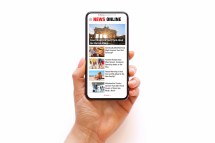Space molecular clouds are vast, dense regions of gas and dust in the interstellar medium where stars are born. Understanding these clouds provides insight into the fundamental processes that lead to star formation and shape our galaxy’s evolution.
What Are Space Molecular Clouds?
Space molecular clouds, often called giant molecular clouds (GMCs), are cold, dense accumulations of molecular gas and dust particles. These clouds primarily consist of molecular hydrogen (H2), along with other molecules such as carbon monoxide (CO), ammonia (NH3), and more complex organic compounds. They can range from tens to hundreds of light-years across and contain enough material to form thousands of stars.
The Composition and Structure of Molecular Clouds
Molecular clouds possess intricate internal structures, including filaments, clumps, and cores. Their temperatures typically hover around 10-20 Kelvin (-263 to -253 °C), which allows molecules to remain stable. Dust grains within these clouds help shield molecules from harsh ultraviolet radiation in space, enabling complex chemical reactions that contribute to star formation.
How Stars Form Within Molecular Clouds
Star formation begins when regions within a molecular cloud experience gravitational collapse due to disturbances like shockwaves from supernovae or galactic collisions. As the cloud fragments into denser cores, gravity pulls matter inward until nuclear fusion ignites in the core’s center—giving birth to new stars. Throughout this process, protostars gather surrounding material through accretion disks before emerging as fully formed stars.
The Role of Molecular Clouds in Galactic Evolution
Molecular clouds play a crucial role in shaping galaxies by acting as stellar nurseries where successive generations of stars emerge. The lifecycle of these clouds — from accumulation through star formation then eventual dispersal by stellar winds or supernova explosions — influences the distribution of elements across galaxies and drives their chemical enrichment over time.
Observing Molecular Clouds: Techniques and Challenges
Due to their cold temperatures and obscuring dust content, observing molecular clouds requires specialized methods such as radio telescopes detecting emissions from molecules like CO or infrared observations penetrating dust layers. These techniques allow astronomers to map cloud structures, study dynamics within them, and better understand the conditions fostering star birth.
Exploring space molecular clouds reveals an extraordinary journey—from diffuse cosmic dust gathering into dense nurseries for new stars—to understanding how our universe continuously renews itself through this remarkable process. By studying these enigmatic formations deeply embedded in galaxies’ fabric, we gain invaluable knowledge about our cosmic origins.
This text was generated using a large language model, and select text has been reviewed and moderated for purposes such as readability.






